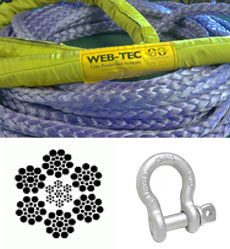One of the most common reasons to remove wire ropes from service is reports of pieces of wire dropping out of place on the rope when being bent by hand. In some more extreme cases, a retired rope has the appearance of being broken in half. The problem is caused by fatigue the rope experiences while in operation. Ropes that experience consistent bending become easier to bend with every repetition. Bending also causes the temperature of the wire to increase. With enough fatigue, ropes will break. Even fatigue suffered with a nylon sling will suffer from extended use.

The most common occurrence of fatigue happens when a wire loses its ability to bend. Bending is caused by some form of constraint that can prevent ropes from freely moving. All wire ropes are subject to this problem though the severity and nature of fatigue vary depending on materials, machine type, and application. Even verope wire ropes suffer from this problem.
It is common for fatigue to become accelerated as a result of abrasion, kinking, and nicking. When breaks occur as a result of fatigue, and there is a sign of wear and tear, the main culprit is considered bending stressed experiences under load over a sheave. When bending around a sheave, the strands of a rope must move relative to each other. This movement creates compensation for the difference in total traveling distance between the underside and the top side of the rope. If a wire cannot move properly, the rope’s actions will be adversely affected.
Related Reading about Stainless Steel Wire Rope